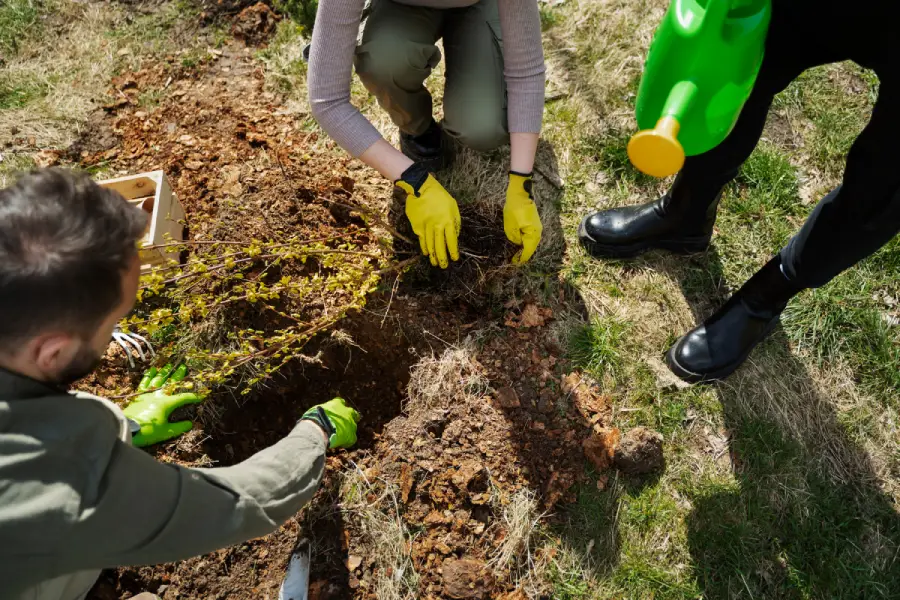Healthy ecosystems are the foundation of life on Earth, providing clean air, fresh water, fertile soil, and climate stability. Yet many forests, wetlands, rivers, and oceans have been degraded by deforestation, pollution, and climate change. This raises an important question: what is ecosystem restoration, and why does it matter?
Ecosystem restoration is the practice of repairing damaged natural environments so they can once again support biodiversity and provide essential services to people. It is one of the most effective strategies we have for addressing environmental challenges, improving resilience to climate change, and ensuring that nature continues to sustain communities around the world.

What Is Ecosystem Restoration?
At its simplest, ecosystem restoration is the process of assisting the recovery of degraded, damaged, or destroyed ecosystems. It involves repairing ecological functions, enhancing biodiversity, and supporting natural processes so that ecosystems can once again provide the services people and nature depend on.
The definition of ecosystem restoration extends beyond planting trees or removing invasive species. It includes restoring soil health, reintroducing native plants and animals, reconnecting fragmented habitats, and improving water cycles—often supported by environmental remediation.
Understanding Ecosystem Restoration
The core goals of ecosystem restoration include:
- Biodiversity recovery: supporting the return of native species and habitats.
- Ecosystem services: restoring benefits such as clean water, carbon storage, pollination, and flood protection.
- Resilience: building ecosystems that can withstand climate change, natural disasters, and human pressures.
- Human well-being: ensuring that restored environments also improve livelihoods, cultural values, and food security.
Types of Ecosystem Restoration
Because ecosystems vary widely, restoration efforts are tailored to each environment. Common types of ecosystem restoration include:
Terrestrial Restoration
This involves land-based ecosystems such as forests, grasslands, and deserts. Examples include reforestation projects, soil remediation, and prairie regeneration. Terrestrial restoration helps stabilize soils, capture carbon, and support terrestrial wildlife.
Aquatic Restoration
Freshwater ecosystems like rivers, lakes, and wetlands often suffer from pollution, damming, and overuse. Restoration may include wetland rehabilitation, river re-meandering, and removal of barriers to fish migration, strategies closely tied to wetland mitigation banking.
Coastal Restoration
Coastal zones, including estuaries and mangroves, are critical for storm protection, fisheries, and carbon sequestration, highlighting the importance of coastal engineering in protecting shorelines.
Marine Restoration
In marine ecosystems, restoration focuses on coral reefs, seagrass beds, and offshore habitats. Efforts include coral transplantation, artificial reef construction, and reducing pressures from overfishing and pollution. Marine restoration boosts biodiversity and strengthens food security for coastal communities.
Benefits of Ecosystem Restoration
The benefits of ecosystem restoration are far-reaching, touching ecological, climate-related, and social aspects.
- Ecological benefits: Improved biodiversity, healthier habitats, and restored food chains.
- Climate benefits: Enhanced carbon sequestration through reforestation, wetlands, and blue carbon ecosystems like mangroves and seagrasses.
- Water and soil services: Cleaner water, flood mitigation, erosion control, and improved soil fertility.
- Human well-being: Better air quality, sustainable livelihoods, cultural values, and recreational opportunities.
The Process of Ecosystem Restoration
Ecosystem restoration is systematic and involves several key stages:
- Assessment – Identifying the causes of degradation, evaluating ecosystem health, and setting restoration goals is guided by the EIA process.
- Planning – Designing strategies that align ecological needs with local community priorities and available resources.
- Implementation – Applying restoration techniques such as replanting vegetation, soil stabilization, or removing pollutants.
- Monitoring and maintenance – Tracking progress through ecological indicators and adapting methods as conditions change.
This process is iterative and often takes years, if not decades, to achieve long-lasting results.

Techniques and Approaches in Ecosystem Restoration
Different projects use different restoration techniques, depending on the type of ecosystem and degree of damage. Common approaches include:
- Habitat creation and enhancement: establishing new wetlands, woodlands, or grasslands where they have been lost.
- Species conservation: reintroducing endangered species or controlling invasive species to rebalance ecosystems.
- Natural regeneration: allowing ecosystems to recover naturally with minimal intervention, sometimes aided by protective measures.
- Soil and water remediation: removing pollutants, improving soil structure, and restoring water cycles.
- Green infrastructure: integrating ecological restoration into urban systems through rain gardens, green roofs, and bioswales, often guided by the principles of environmental planning.
Role of the Stakeholders in Ecosystem Restoration
Ecosystem restoration requires collaboration across multiple stakeholders:
- Governments provide funding, policy frameworks, and land-use regulations.
- Non-profit organizations lead restoration initiatives, raise awareness, and mobilize volunteers.
- Local communities contribute traditional knowledge, labor, and long-term stewardship.
- Scientists and engineers design restoration methods, assess progress, and ensure ecological success.
- Private sector partners increasingly support restoration through corporate responsibility and sustainable investment.
Challenges and Limitations
While promising, ecosystem restoration faces significant challenges:
- Financial constraints: Large-scale restoration requires substantial investment, which can be difficult to sustain.
- Ecological complexities: Ecosystems are dynamic, and predicting outcomes is challenging. Restored systems may not return to their original state.
- Conflicting interests: Land-use demands for agriculture, development, or mining can hinder restoration efforts
- Climate change pressures: Rising temperatures, sea-level rise, and extreme weather complicate restoration goals.

Conclusion
So, what is ecosystem restoration? It is the process of repairing and revitalizing ecosystems so they can once again support biodiversity, provide essential services, and benefit people. The definition of ecosystem restoration encompasses more than repairing damage, it’s about building resilience, reconnecting people with nature, and ensuring long-term sustainability.
From terrestrial forests to coastal mangroves and coral reefs, the types of ecosystem restoration show how broad and impactful this field can be. Its benefits extend to ecology, climate, water, and human well-being. While the process is complex and often resource-intensive, it is one of the most effective ways to address biodiversity loss and climate change simultaneously.
